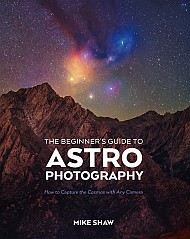Astronomy
The Strongest Solar Storm in 20 Years Did Little Damage, but Worse Space Weather Is Coming
Years of careful planning helped safeguard against last weekend’s severe space weather, but we still don’t know how we’d cope with a monster event
Genetic mutation gives cats a 'salty liquorice' coat colour
Genetic mutation gives cats a 'salty liquorice' coat colour
Virtual power plants could ease growing strain on US electric grid
Virtual power plants could ease growing strain on US electric grid
Mental Time Travel Helps Birds Remember Food Stashes
Eurasian Jays use something similar to humans’ episodic memory to remember where they stored their food
How New Science Fiction Could Help Us Improve AI
We need to tell a new story about AI, and fiction has that power, humanities scholars say
Dusty galaxy looks like a cosmic net in gorgeous new Hubble Telescope photo
Does Quantum Physics Rule Out Free Will?
Everything in the universe may be preordained, according to physics
New Photos Show Jupiter’s Tiny Moon Amalthea
NASA’s Juno spacecraft spies a tiny inner moon of Jupiter, Amalthea.
It’s tiny, but it’s there. By now, we’re all used to seeing amazing photos of Jupiter courtesy of NASA’s Juno mission on a routine basis. Many of these are processed by volunteer ‘citizen scientists,’ and they show the swirling cloud-tops of Jove courtesy of the spacecraft’s JunoCam in stunning detail.
Recently, JunoCam captured something special. Look closely at the side-by-side images of Jupiter from March 7th, 2024, and you’ll see a tiny speck transiting the Great Red Spot in the left lead image, that isn’t in the right. That’s the tiny inner moon Amalthea, just 84 kilometers across. The image was captured during the 59th perijove (close flyby) of the ‘King of the Planets,’ at a range of 265,000 kilometers distant (about two-thirds of the Earth-Moon distance).
Amalthea (arrowed) transits Jupiter. Credit: NASA/JPL-Caltech/SwRI/MSSS. Image processing by Gerald Eichstädt. Amalthea: An Origin StoryThe elusive moon was discovered by prolific astronomer and observer E.E. Barnard on the night of September 9th, 1892. Barnard used the 91-centimeter diameter refractor telescope at the Lick observatory to spot the +14th magnitude moon, which never strays more than 30” from Jupiter (less than the apparent diameter of the planet) on its 12 hour orbit. Amalthea holds the distinction of being the last moon discovered via direct visual observation, and the first moon of Jupiter discovered since Galileo first spotted the four major Galilean moons in 1610. Today, Jupiter has 95 known moons, mostly captured asteroids. These were mainly discovered photographically and during spacecraft flybys.
One of Juno’s enormous solar panels, unfurled on Earth. NASA/JPL/SWrILike other small moonlets, Amalthea isn’t big enough to pull itself into a true sphere. Instead, like the Martian moons Phobos and Deimos, Amalthea is a potato-shaped, captured asteroid.
Amalthea: None More RedThe moon is also the reddest object in the solar system, and no doubt undergoes some serious tidal flexing thanks to the enormous gravitational field of nearby Jove. Amalthea is located 180,000 kilometers from Jove, just a little over 100,000 kilometers outside of Jupiter’s Roche limit radius. Any closer to Jove would tear Amalthea apart. The very innermost moon Metis just skims this limit.
Voyager 1’s color image of Amalthea from 1979. Credit: NASA/JPLVoyagers 1 and 2 gave us the first blurry views of the moon. NASA’s only other Jupiter orbiter Galileo has provided us with the best images of Amalthea to date, with a flyby 374,000 kilometers distant on November 26, 1999. Those images reveal a misshapen world, not unlike Mars’ moon Deimos. From the surface of Amalthea, Jupiter would provide an amazing sight, spanning nearly half the sky at 42 degrees across.
The Galileo spacecraft’s best view of Amalthea. Credit: NASA/JPL Juno and the Present Status of the MissionJuno launched from the Cape on August 5th, 2011, and arrived at Jupiter on July 5th, 2016. The mission probes the interior of Jupiter and its magnetic and radiation environment. Juno will answer key questions, including whether the planet has a solid core. Juno is the first solar-powered (as opposed to nuclear/plutonium-fueled) mission to the outer planets, meaning its nominal wide-ranging orbit was meant to avoid radiation damage to the solar panels. Engineers only allowed the spacecraft to venture in past the inner moons of Jupiter during the extended and final phase of the mission. Juno will operate until at least September 2025.
Two more missions are headed to Jupiter; ESA’s JUICE (Jupiter Icy moons Explorer) launched on April 14th 2023, and NASA’s Europa Clipper, set to launch in October 2024.
Jupiter, as seen from the surface of Amalthea. Credit: StellariumWatch for more amazing images courtesy of Juno, as the mission enters its final months and days.
The post New Photos Show Jupiter’s Tiny Moon Amalthea appeared first on Universe Today.
<p><a href="https://apod.nasa.gov/apod
Webb detects most distant black hole merger to date
An international team of astronomers have used the NASA/ESA/CSA James Webb Space Telescope to find evidence for an ongoing merger of two galaxies and their massive black holes when the Universe was only 740 million years old. This marks the most distant detection of a black hole merger ever obtained and the first time that this phenomenon has been detected so early in the Universe.


